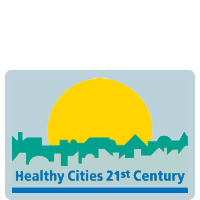- Plan public realm schemes to boost regeneration
- Provide high quality streets and places to boost resident esteem and promote investor confidence
- Take actions to reduce the risk of traffic accidents on busy roads within areas of socioeconomic disadvantage
- Restrict health damaging uses, especially in areas of socioeconomic deprivation that tend to have higher concentrations (specifically fast food outlets)
Sources: The Pedestrian Pound: the business case for better streets and places (Living Streets, 2013); The Built Environment and Health: an evidence review (GCPH, 2013)
Examples of adopted policies
Newham Core Strategy
- Objective to improve employment levels and reduce poverty, while attending to the environmental impacts of economic development, including community/public safety, noise, vibrations and odour, and the legacy of contaminated land
Stockport Core Strategy
- Seeks to address disparities in social equity between pockets of deprivation and areas of affluence, resulting in inequalities, especially in health
Bristol Site Allocations and Development Management Policies (publication version, not yet adopted)
- Development should contribute to reducing the causes of ill health, improving health and reducing health inequalities within the city, through:
- addressing adverse health impacts
- providing a healthy living environment
- promoting and enabling healthy lifestyles as the normal, easy choice
- providing good access to health facilities and services
Further information, and examples
Plugging health into planning (LGA, 2011)
Healthy Places website (managed by UK Health Forum)


